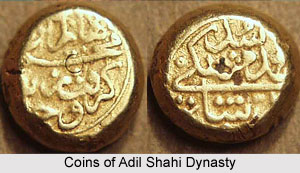 Yusuf Adil Shah was also known as Hidalcao or Adil Khan and he ruled from 1459 to 1511. He had established the Adil Shahi dynasty which controlled the Sultanate of Bijapur for two centuries. This ruler had created Bijapur town and thanks to his efforts this town enjoyed an elevated status.
Yusuf Adil Shah was also known as Hidalcao or Adil Khan and he ruled from 1459 to 1511. He had established the Adil Shahi dynasty which controlled the Sultanate of Bijapur for two centuries. This ruler had created Bijapur town and thanks to his efforts this town enjoyed an elevated status.
History of Yusuf Adil Shah
Yusuf Adil Shah was a Bahmani nobleman who was bought from the country of Iran by Mahmud Gawan. Originally, he was a Georgian slave. Sultan Yusuf Adil Shah Sawa was the full name of Yusuf, according to a historian. Some historians are of the view that Yusuf Adil Shah was the son of Murad II who was the caliph of Islam and an Ottoman Sultan. Mehmed II was his son, who had succeeded the throne. Following his accession to the throne, all the brothers of Yusuf were ordered to be executed, including Yusuf himself. It is believed that Yusuf`s mother had managed to protect him by exchanging him with a slave boy. Yusuf was then transported to Persia and eventually arrived in India, wherein he started rendering his services to the Bahmani king of the region of Deccan. He gradually turned into an important personality inside the court of Mahmud II.
Career of Yusuf Adil Shah
The outstanding boldness of Yusuf Adil Shah impressed the Bahmani sultan whom he served. This enabled him to win his favour, which helped him to be appointed as the Governor of Bijapur. In the year 1489, Yusuf made a brave attempt to establish himself as a Sultan at the throne of Bijapur. He then launched a battle against the empire of Vijayanagara. The Sultanate of Bijapur created a strong army for about two centuries until it was finally defeated by Aurangzeb in the year 1686. The palace named Faroukh Mahal was constructed during the reign of Yusuf Adil Shah and he is said to have imposed the Citadel. He was a passionate lover of the arts and literature and is believed to have patronised numerous learned poets, scholars and musicians belonging to Rome, Persia and Turkey. He was a tolerant ruler who was himself a talented musician.
He wedded Punji, who was the sister of a Maratha warrior and died in the year 1511, following the defeat of Goa to Afonso de Albuquerque, a Portuguese governor, in the year 1510. The kingdom of Yusuf Adil Shah was not large and his son Isamail Adil Shah succeeded him to the throne of Bijapur. Since he was a minor, he was guided by a man named Kamal Khan.



















